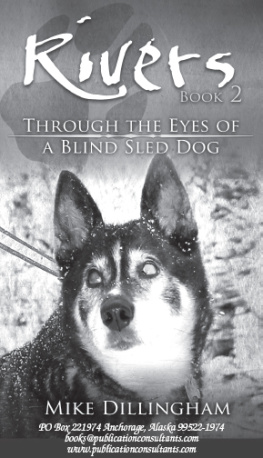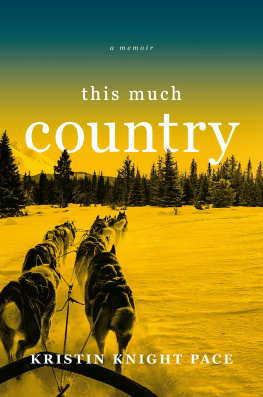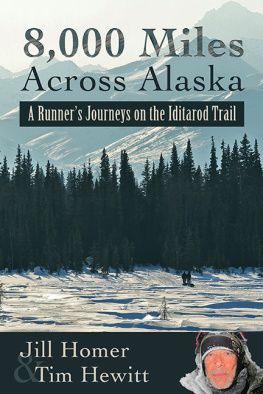Foreword by Joe Runyan
B eyond Ophir: Confessions of an Iditarod Musher, Jim Laniers self-effacing account of four decades of arctic adventure with sled dogs on the 1,000 mile Iditarod trail, conveniently occupied my reading evenings during the fall of 2012. Fortunately, not only was I asked to read the original manuscript, I was also asked to write the foreword for his book.
Why do I say fortunate? Well, I now have the opportunity to provide important information woefully absent in Jims literary rendition which will allow the reader a clear understanding of one of Iditarods iconic characters.
As Jims former Iditarod and mushing colleague, and now a blogger who vicariously follows the Iditarod for race devotees, I was particularly interested in the subtle machinations of a dry witted mind, which I have appreciated for several decades. Of course, I understood that Jim Lanier was a doctor in Anchorage, but, honestly, I have only known him in an Iditarod setting encumbered in arctic clothes and by his all white team of Alaskan Huskies. Occasionally, I have caught him in a pedestrian way dressed in street clothes at a musher meeting or banquet, often with his wife Anna, whom I also know from the Iditarod trail. Over a period of timeI dont know exactly how it happenedI began to look forward to a chance encounter with Jim Lanier. This required some mental exercise to provide a topical subject because it was absolutely essential, from my point of view, to provoke or stimulate a pithy response in his low resonant baritone voice.
He does this in an even spoken professorial way, which initially masks the true identity of a guy with a monstrous sense of humor. For example, I saw Jim on the first floor of the Millennium Hotel on Thursday morning, just before the race start on the first Saturday of March 2012. I had not seen him since last years race, but I realized that this first encounter was very important, and likely Jim will set me up with some easy fodder for my Iditarod blog if I can get him rolling.
Really, its possible to say something stupid. I lead Well, Jim, are you actually going to run an all-white team this year? He answers very seriously, informs me that he was short on white dogs and actually will have some color coated huskies in the team, but within three sentences we are launched on a hilarious excursion into the existential reasons a guy 71 years old would be running his 15th Iditarod.
Having established the necessary repartee with Jim in Anchorage, and then standing for the magnificent a cappella of The Star Spangled Banner and Alaskas Flag (the Alaska State Song) by Jim, his wife Anna, and son Jimmy at the Thursday night Iditarod Banquet (Alaskas largest social event), I prepare myself for the trail and my job of journalizing the front running pack of the Iditarod.
In my 2012 narrative at Iditarod.com, I follow the lead pack of the Iditarod over the first third of the race from Willow, up the southern shoulder of the Alaska Range, down the north side of the great range through the intimidating Dalzell Gorge, and across the grand flats of the Nikolai Burn and the interminably immense Yukon River drainage.
For strategic reasons, race leaders Aliy Zirkle, the Older and the Younger Seavey, Burmeister, Baker, King, et al decide to stop about 100 miles short of the half-way point, the remote checkpoint of Cripple, for a mandatory 24 hour rest. Though the first musher to Cripple checkpoint will win $3,000 dollars in gold nuggets, the front runners decide to pull up in Takotna. Several considerations form their decision, but the biggest concern is the condition of the trail Beyond Ophir to Cripple checkpoint which is said to be windblown, soft, and slow pulling. The race leaders decide to stop in Takotna, rest their dogs, and hope that the trail will harden in the next 24 hours.
Behind Zirkle et al arrived musher after musher, all of whom decided to stop in Takotna. This drives me nuts because a situation has been offered to the middle of the pack to seize the day and vault passed the front of the race and Win The Gold. I kept asking anyone that would listen, Where is the man or woman willing to take a gamble and go for the gold? If you know you cant win the Iditarod, why not take a chance and forge on to Cripple?
Well, there are a couple of good reasons, one of which is that the first musher to Cripple will cross a truly primitive, stark, and uninhabited 77 miles of trail alone. If the trail, as reported, is a sugar bowl of loose snow, the mushing could be interminable. Yet, I just could not believe somebody would not step up to the plate and take the challenge.
At the Takotna checkpoint I continued to watch team after team pulling in to camp and refuse to challenge the front of the pack and move further down the trail. I circulated around the checkpoint kitchen looking for stories amongst dining mushers.
Finally, at 2:59 PM (March 7), almost 14 hours after the arrival of Aliy Zirkle, a cry went out that a musher was approaching the checkpoint. I stepped outside, immediately donning my sun glasses in the afternoon sun, looked through the glare, and noted the arrival of a nearly all white team of huskies. Jim Lanier.
I yelled out A hero emerges! While Jim signed the checkers sign in sheet, I asked, Tell me you are going to get the half-way gold at Cripple. Jim looked at me contemplatively. At the same time I realized he was dead tired, pounded by the trail, and exhausted.
Yet, in the ensuing three seconds, a new raison detre was formed. With considerable conviction, he said, evenly, I am not stopping. I am going to Cripple. For a moment I was astounded because Jim, often the oldest guy on the trail, had reason to stop.
I looked around the checkpoint crowd and dramatically stated, Thats our man, somebody has finally accepted the challenge and will forge alone to the halfway gold.
Jim repeated to the checker, I am not stopping, I am going to Cripple. After only 8 minutes in Takotna, grabbing a sack lunch from the kitchen, he then pulled the hook anchoring his team, and the nearly all white team of huskies (A couple of them are various husky colors.) started the long climb on the old mining road bed to Ophir and then on to Cripple. I took a few photos for my next blog.
I started to think about Jims chances of actually beating the front runners to Cripple. To be honest, it would be close since Jim would certainly stop for a rest in Ophir, a third of the way to the gold in Cripple. Realistically, Beyond Ophir he would probably find the trail soft and need to take another break mid-way on the expansive tundra to Cripple. Remember, the distance from Ophir to Cripple is hugeestimated by trail breakers at 77 miles.
Through the following night I blogged about Jims chances to eclipse the front runners. One other musher, Trent Herbst, a middle of the pack racer, was also on the trail and seemed intent on the gold as well. Trent had pocketed the gold in 2011 by beating Kelly Griffin to Iditarod (halfway point on the southern route). He was like a hawk that flies over the same chicken coup for another chance at a meal. He could, I thought, catch Jim Lanier and put the gold in his personal exchequer, also accompanied by a quality photo with a long frosted beard.










